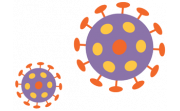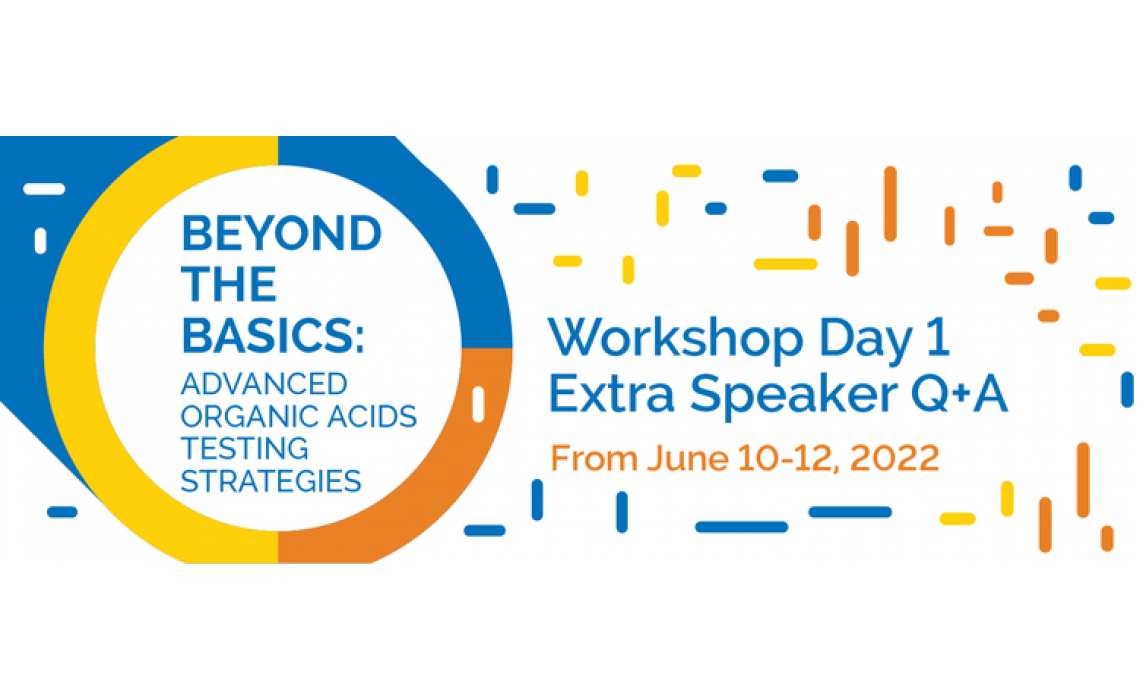ORGANIC ACIDS TESTING STRATEGIES: Q&A WITH KURT WOELLER, DO
The following Q+A is a grouping of responses from the Day 1 workshop presentations. Click each presentation title to expand the answers from each speaker.
The material contained within this article is not intended to replace the services and/or medical advice of a licensed healthcare practitioner, nor is it meant to encourage diagnosis and treatment of disease. It is for educational purposes only. Any application of suggestions set forth in the following portions of this article is at the reader's discretion and sole risk. Implementation or experimentation with any supplements, herbs, dietary changes, medications, and/or lifestyle changes, etc., is done so at your sole risk and responsibility.
DAY 1 Q+A: ORGANIC ACIDS

KURT WOELLER, DO
Introduction To The Organic Acids Test and Why It Is So Important In Clinical Practice / The Link Between Invasive Candida and Various Health Issues / The Link Between Clostridia Bacteria Toxins and Various Health Issues / The Link Between High Oxalate and Various Health Issues / Neurochemical Imbalances and Quinolinic Acid Toxicity / Additional Case Studies: Lab Reviews and Treatment Options
Q: I have a patient who has extreme elevated markers for aspergillus. His markers show in the red zone on two different Organic Acids Tests. Yet he insists there is no way that it could be environmental exposure in his home. With markers this elevated on two different tests, is there any possibility this could be coming from diet?
A: Unlikely to be from diet. Many people deny the existence of mold. Other sources of mold exposure are other buildings, e.g., work, school. Cars can sometimes be a source of mold.
Q: How often is 2-Hydroxyhippuric elevated due to high salicylate foods? Is it rare, unusual or common?
A: Very common
Q: Please explain how Clostridia or yeast markers can be high but the stool microbiome testing does not show these?
A: Stool is often normal for these organisms, particularly yeast. Yeast does not always actively shed in the stool. Clostridia difficile is detected through toxin A and B, but there are various strains of clostridia that produce other toxins other than A and B.
Q: What's the benefit of the OAT over blood testing for vitamins and stool for candida and bacteria?
A: Stool is often normal for clostridia. There can be benefit to blood testing for nutrients. The OAT conveniently provides some markers through urine, but, blood testing can play a role too.
Q: I have a patient who has concerns about her neurologic status. She is on Lexapro, Wellbutrin and Depakote for maintenance. She would like to wean herself off, but is afraid of ramifications. When doing the OAT, will these meds interfere with the results of the neurotransmitters or any other markers?
A: Yes. These medications can influence the neurotransmitter metabolites. Take this into account when interpreting the OAT results.
Q: Besides Biocidin or drugs like vancomycin, are there any herbs/compounds that you use to treat clostridia infection in toddlers and in children?
A: I always use probiotics and particularly soil-based organisms too with antibiotics and/or botanicals. Research other botanical products if you find an individual allergic to something in the Biocidin.
Q: If arabinose is elevated (slightly above 2nd SD) and the patient has no candida overgrowth symptoms, do we still treat it?
A: I would personally still address it even if it was with probiotics.
Q: Is there a follow-up test for current candida infection if there is an elevation in arabinose/ tartaric acid? It doesn't seem like the candida antibodies test (IgG, IgM and IgA) gives an absolute answer as to the current infection?
A: The follow-up test I do for these markers is another OAT or Microbial OAT.
Q: Any studies or opinions as to the efficacy of nystatin or Diflucan vs botanicals for candida. Do you dose daily or every few days to prevent mutations to other forms of candida?
A: For Candida, I dose daily. I recommend researching for botanical studies for efficacy information.
Q: How important is diet with respect to candida treatment? If important, which diet?
A: Diet is always important. There are many different diets, so you need to research various candida diets to see which one best fits your patient’s condition.
Q: When do you use Cholestyramine to treat for mycotoxins and mold?
A: This medication is for mycotoxins. It is helpful and can be used right away, but it can be a challenge for some people to take long-term, particularly children.
Q: How many times a day do you want a patient to have a bowel movement while on binders? What do you use in addition to magnesium citrate for BMs?
A: At least one bowel movement daily. Slippery elm herb, fiber supplements, hydration, phosphatidylcholine (to help with bile flow), bitter herbs (e.g., Swedish Bitters).
Our Organic Acids Test includes markers for vitamin and mineral levels, oxidative stress, neurotransmitter levels, and is the only OAT to include markers for oxalates, which are highly correlated with many chronic illnesses.
Q: Why do people get clostridia? Is it due to diet or toxin exposure or genetic susceptibility?
A: We are all exposed or potentially exposed. Toxins can certainly impact the environment of the digestive system making clostridia problems worse.
Q: What do you think about saccharomyces boludia supplement for C. Diff toxins? Do you have concerns about using it for yeast infection as it is a fungal product?
A: It may work, but some people are sensitive to it. However, it can be effective for various bacteria and yeast. Personally, I would not rely on it as the only intervention.
Q: Do you treat any other things at the same time as Clostridia or wait until you complete Clostridia treatment? Also, would you wait for the repeat mOAT before starting treatments for other infections?
A: With botanicals and probiotics you can often treat multiple things at the same time. The mOAT is to help recheck the clostridia, mold and/or candida markers, but other treatments can be started while you wait for results in my experience.
Q: You mentioned that Niacin inhibits IDO. I was wondering if high-dose supplementation would also push tryptophan into the serotonin pathway simply because the tryptophan would not be needed to make niacin.
A: It does not inhibit IDO specifically, but it can lead to its reduction if niacin is deficient. A niacin deficiency can lead to IDO activation.
Q: Would you expect to see high oxalate on patients who do ProLon (fasting-mimicking diet) that implements glycerin intake for 4 days of the diet?
A: This might occur. I don’t have any firsthand knowledge.
Q: Does P5P work better than pyridoxal hydrochloride? What about activated B6 makes it better? Or does pyridoxal hydrochloride become P5P in the body and then broken back down to pyridoxal hydrochloride?
A: Not necessarily. The body converts pyridoxine into P5P. There is some speculation that the P5P taken orally just gets dephosphorylated across the GI membrane and then phosphorylated again.
Q: Is it appropriate to use Biocidin concurrently for example if a patient has taken another doctor's advice to do Prednisone and Methotrexate for a month? He has high candida, Aspergillus, and high HPHPA and above the mean 4-cresol. He just started the pharmaceuticals. Very likely mold issue in a home with high Ochratoxin. He is getting his house checked next week, but symptoms have been very severe now.
A: I have not seen any issues with Biocidin and other medications.
Q: What are the problems with PCR stool testing?
A: PCR is not inherently a problem and can be useful to detect the existence of pathogens in the digestive system. The difficulty is in the PCR spin cycle (too high is oversensitive) and interpretation of active infection.




